History of the circuit and iconic races
Monaco Grand Prix has been hosting races since 1929. It is one of the only remaining circuits where the talent of the drivers can still make a difference. The legendary Ayrton Senna won here in Monaco 6 times in the past, making it the highest win in this circuit by a single driver and is also referred to as the “King of Monaco”. The circuit, which has been nearly identical since 1950, is 3.34 km long. The highest wins as a constructor in Monaco have been held by the all-mighty McLaren Racing.
Monaco Gran Prix 1929 -
Bugatti won the first Monaco Grand Prix in 1929. As the start flag waved, William Grover quickly floods his eight cylinders with fuel, bravely taking the wheel and steering his Bugatti Type 35 B quickly through the narrow streets of Monaco. Like today, overtaking in the narrow streets was rarely possible. But the failure rate in the race is high and the field thins out quickly. After 80 laps of the circuit with nine cars, three go for the win. On lap 49 Grover goes to the pits, allowing Caracciola to take the lead. But Grover catches up again, his Bugatti has the better grip on the hot track surface. Type 35 is an absolute winning car and almost unbeatable in the 1920s; with over 2,000 race victories during Bugatti's "golden decade" it is also one of the most successful race cars of all time.
The 1950 Monaco Grand Prix -
This was the second race of the inaugural Formula One World Championship in 1950. The 100-lap race took place on 21 May 1950 and was won by Juan Manuel Fangio from flag to flag. Fangio also set the fastest lap, thus completing the first Grand Chelem in Formula One history. Fangio's dominant win at Monaco had allowed him to draw level with teammate Farina in the championship standings. The two drivers shared nine points, with both taking a victory and a retirement in the opening two rounds. Fagioli, Alfa Romeo's third driver was still not far behind, he had six points, however, his non-finish in Monaco meant that all his points had been earned at Silverstone. The Ferrari's evidently still had more work to do, poor reliability had cost Luigi Villoresi a well-deserved second place, and only the car of Alberto Ascari in second place scored points.
The 1961 Monaco Grand Prix -
The remarkable late Sir Stirling Moss performed many wonderful moments in a racing car, but his finest hour and his greatest race were the 1961 Monaco Grand Prix, in which he was called upon to drive an obsolete Lotus giving away at least 30bhp to the Ferrari’s. Ginther led Clark and Moss into the first corner but Clark quickly ran into trouble with a faulty fuel pump. Ginther dropped to third on lap 14, when Moss and Bonnier passed him in quick succession. At a quarter distance, Moss had an impressive 10-second lead even with an underpowered car, but the Ferrari of Hill and then Ginther began to close the gap. At half distance, Moss’s lead was 8 seconds, and down to 3 seconds on lap 60. Ginther moved into second on lap 75 and tried to close the gap, but Moss was able to match his lap times, despite the 156's horsepower advantage and finished the race in pole position.
The 1965 Monaco Grand Prix -
The race would be remembered for the dominant display of “Mr. Monaco” Graham Hill, as rivals Jim Clark and Dan Gurney missed the race due to their decision to race in the Indianapolis 500 now with the Lotus team absent, and Brabham-Climax left to race with a rookie named Denny Hulme, Hill would go to battle for pole with the Ferrari of John Surtees and Lorenzo Bandini. The BRM racer duly managed to defeat his available rivals to pole position, with Jack Brabham claiming second place on the grid.
Graham hill is the only man to claim the “Triple Crown of Motorsport” which is an unofficial motorsport achievement for victory in three of the most prestigious races in the world. The three races are the Monaco Grand Prix (from Formula One), the Indianapolis 500 (from IndyCar), and the 24 Hours of Le Mans (from endurance racing).
The 1970 Monaco Grand Prix -
For almost the first half of the race, Rindt drove, in his own words, "like a taxi driver". He passed just one other car, Henri Pescarolo's Matra, by which point Brabham had passed Amon for the lead, Stewart having stopped with a broken engine. Showing more pace, Rindt caught and passed Hulme, then got into second place when Amon's suspension broke with 19 laps to go. Brabham was 15 seconds up the road though, which was surely enough margin. Held up twice by unhelpful backmarkers. Rindt went on his fastest lap of the race at the penultimate lap and at the final corner, Brabham went off the line to lap backmarker Piers Courage and slid off into the barrier, leaving a massively lucky Rindt to take the chequered flag and win the 1970 Monaco Grand Prix with a mega drive.
The 1982 Monaco Grand Prix -
This was the first race following the death of Gilles Villeneuve at the Belgian Grand Prix two weeks previously. Consequently, Ferrari entered only one car, for Didier Pironi. René Arnoux took pole position in his Renault and led until he spun off at the Swimming Pool on lap 15. Team-mate Alain Prost took over the lead and held it until the closing stages when the rain started to fall. On lap 74, Prost pushed too hard and crashed into the barriers coming out of the Chicane du Port, handing the lead to Riccardo Patrese in the Brabham. Then on lap 75, Patrese spun due to an oil leak on the track surface at the Loews hairpin and stalled. Pironi now led, but his battery was not charged properly before the race and the engine started misfiring on the last lap and finally stopped in the tunnel on the final lap. Andrea de Cesaris then ran out of fuel before he could pass Pironi, and Derek Daly, the next leader, had already lost the wings from his Williams after an accident and had also damaged his gearbox, which gave way up before he could start the final lap. Patrese, who had managed to restart his car by rolling downhill and bump starting, came through to take his first Formula One victory, with Pironi, and de Cesaris second and third respectively. Leaving this to be called one of the most confusing and chaotic races in Monaco history.
The 1992 Monaco Grand Prix -

In 1992, Nigel Mansell was unstoppable in the Williams FW14B and had won all five of the opening rounds of the season. Then came Monaco and again Mansell was on pole and for 71 laps he led until a puncture forced him to pit. The legendary Ayrton Senna took the lead in his McLaren and for the final few laps placed his car perfectly through corner after corner as a much faster Mansell on fresh tires and pushed behind his Senna, but to no avail. Senna had won again, equaling Graham Hill’s record of five wins a record he would take away from Hill with his final Monaco victory the following year, and one he still holds to this day.
A Lap around Monaco
After the race line, the driver arrives at the infamous Sainte Dévote curve, a place of many accidents and as famously mentioned by the 7-time world champion Micheal Schumacher “No heroics into Sainte Dévote”. The track then goes up around the Casino of Monte Carlo, in front of the Hotel de Paris, and then goes down again to the right curve of the Mirabeau Haute. It continues then to the slowest turn of the championship; Virage Fairmont (historically Virage Loews), which is where the Fairmont Hotel Monte-Carlo is situated. The section of the Portier brings the drivers right next to the sea, where the track goes into a tunnel and carries onto Nouvelle Chicane, also a site for a lot of crashes. Past that drivers head towards the Tabac and onto Piscine through the swimming pool chicane.
Finally arriving to the tight right into La Rascasse and another tight right-hander onto the main straight and across the line.
Transformations and Upgrades of the Circuit
The circuit of Monaco had a few transformations and upgrades since its inception:
1973 - The road of the swimming pool made it possible to install the stands on the Quay
1976 - Two new baffles are installed respectively at Ste Dévote and on the outlet side of the Rascasse
1986 - The widening of the Quay des Etats Unis allows the creation of a new Baffle
1997 - The first "S" of the swimming pool is redrawn and has now the name of turn "Louis Chiron"
2003 - The first phase of installations of the circuit touched only the southern part of the port. 5 square kilometers of ground were gained on the sea. The circuit ranging between the 2nd "S" of the swimming pool and Rascasse was moved by 10 meters compared to its initial site and completely redrawn. Installation of a baffle at the exit of the 2nd turn of the swimming pool
2004 - The doubling of the width of the esplanade accommodating the zone of the stands on the level of the Boulevard Albert 1st, by the creation of a building on the influence of the old track between the swimming pool and Rascasse. New stands representing an area of 250 square meters will be placed at the disposal of each team.


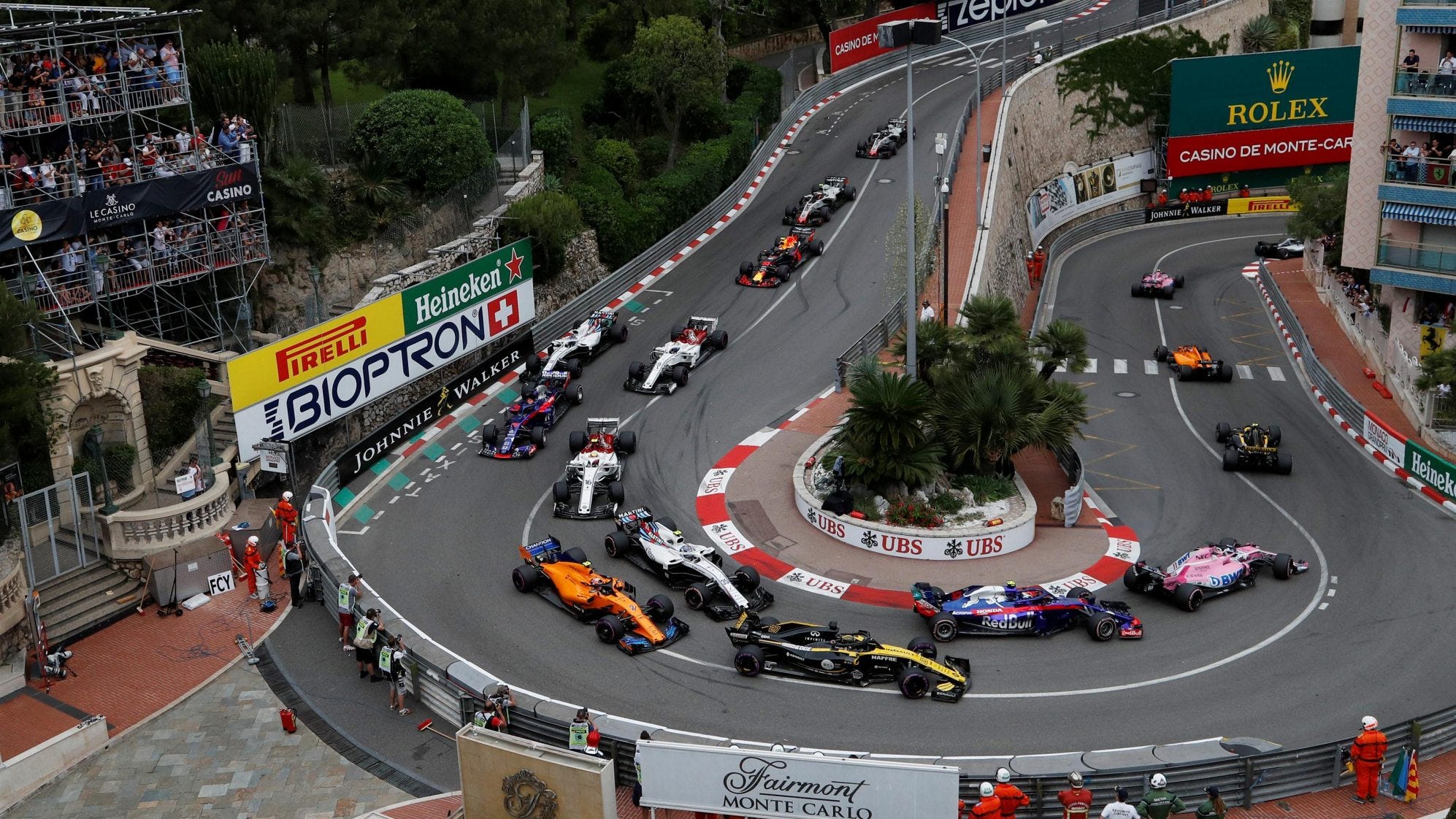
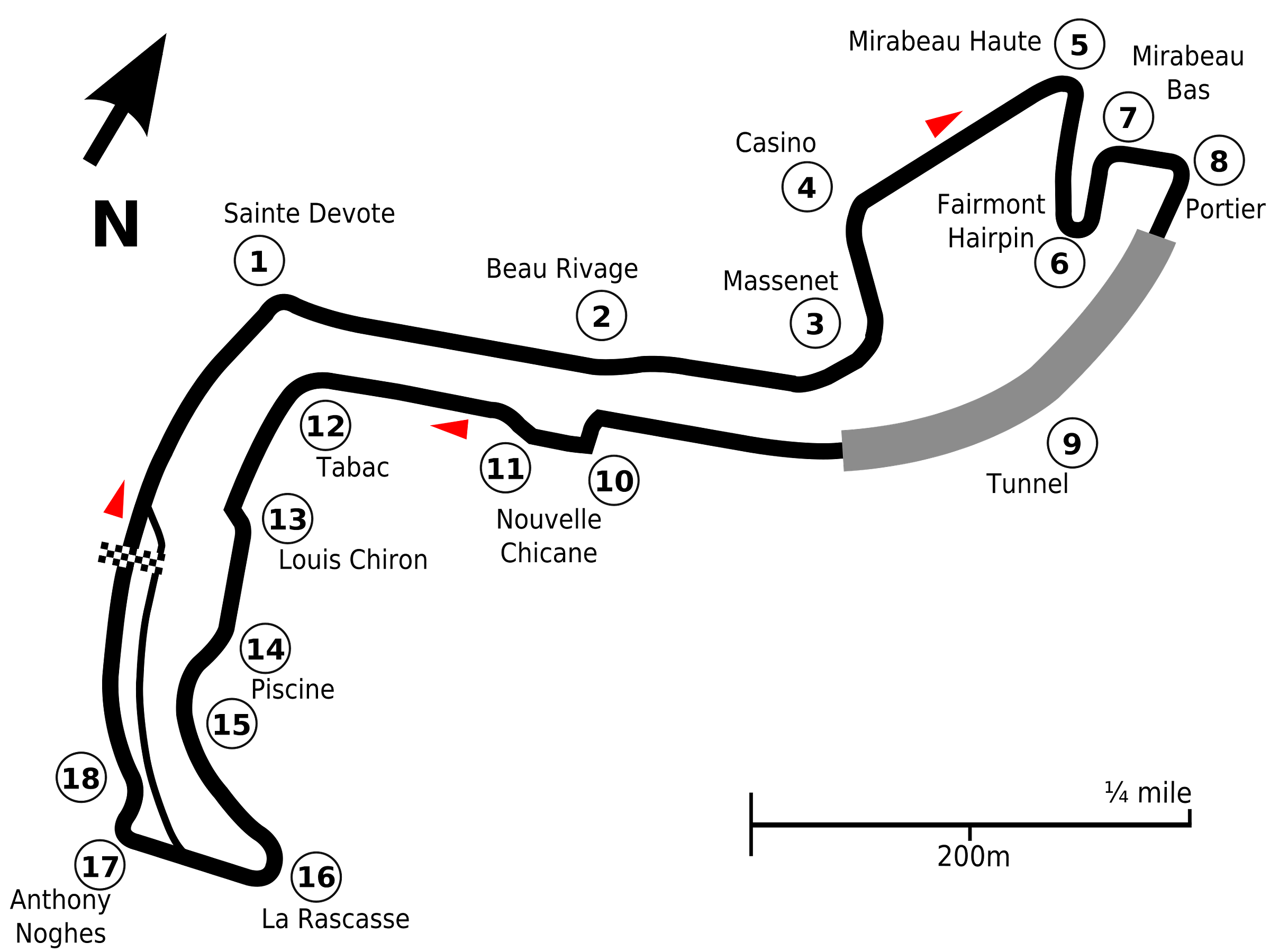
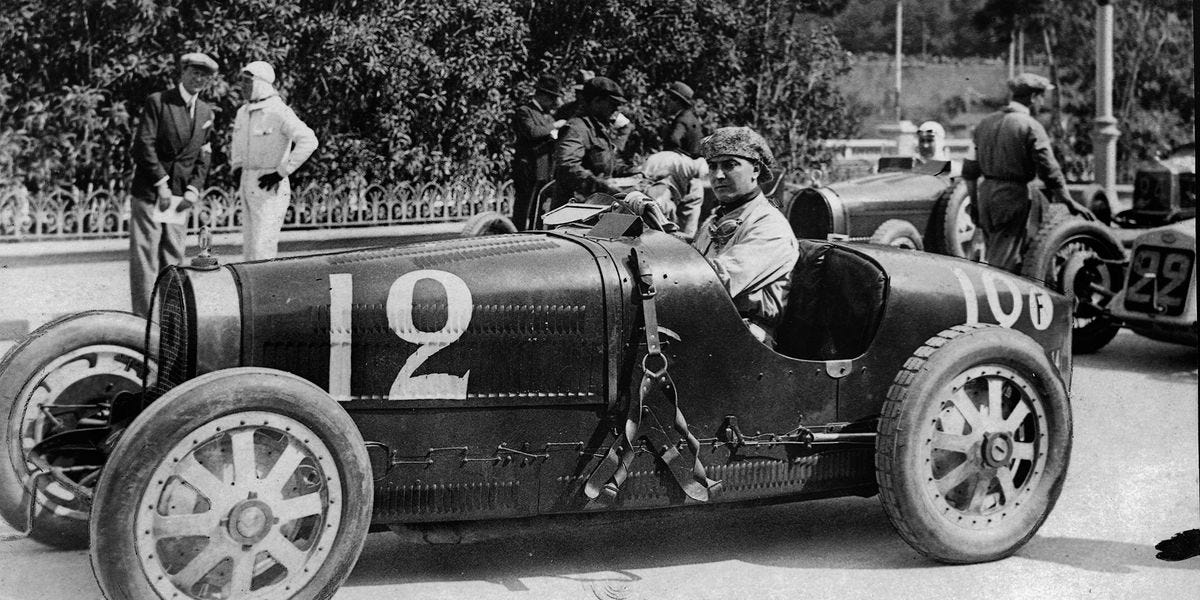


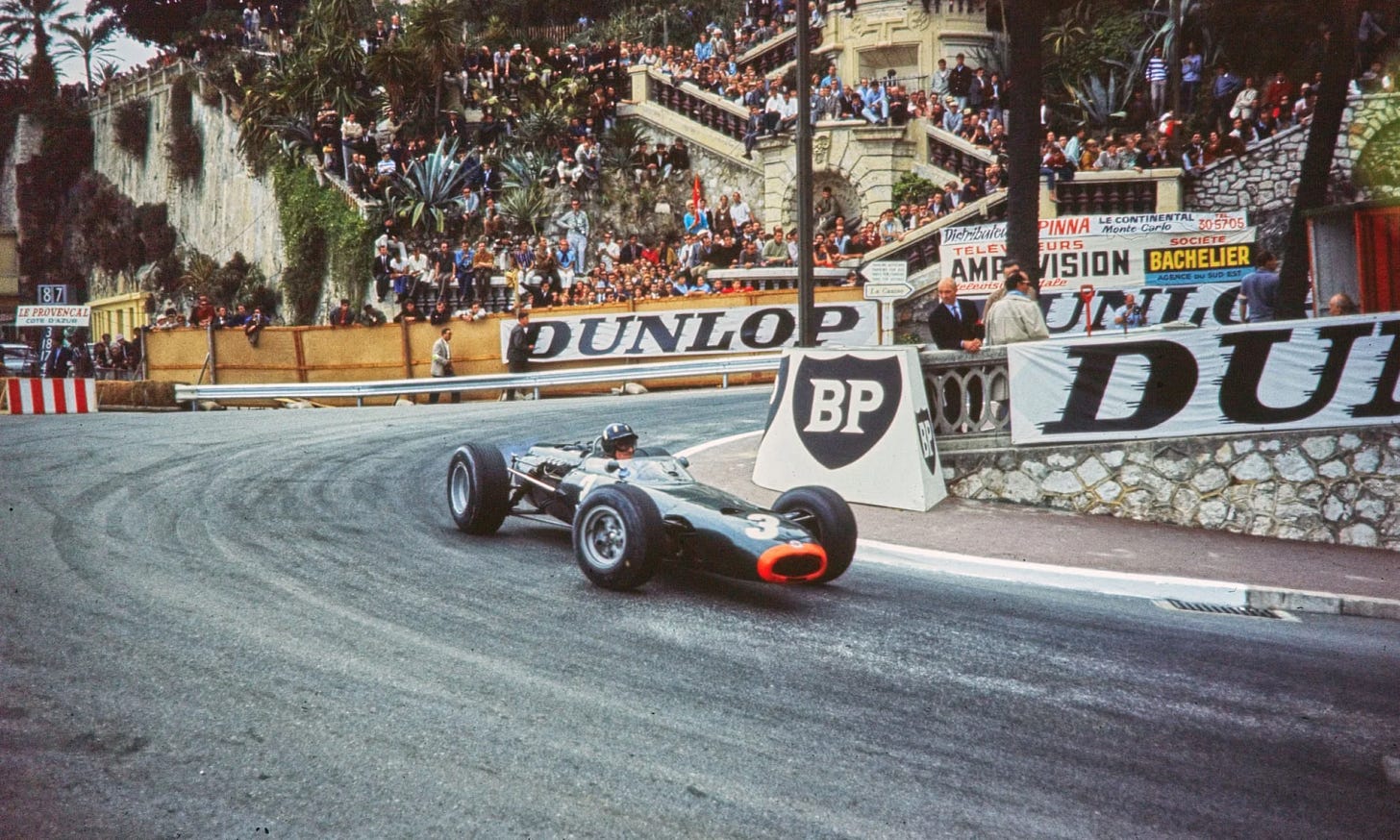
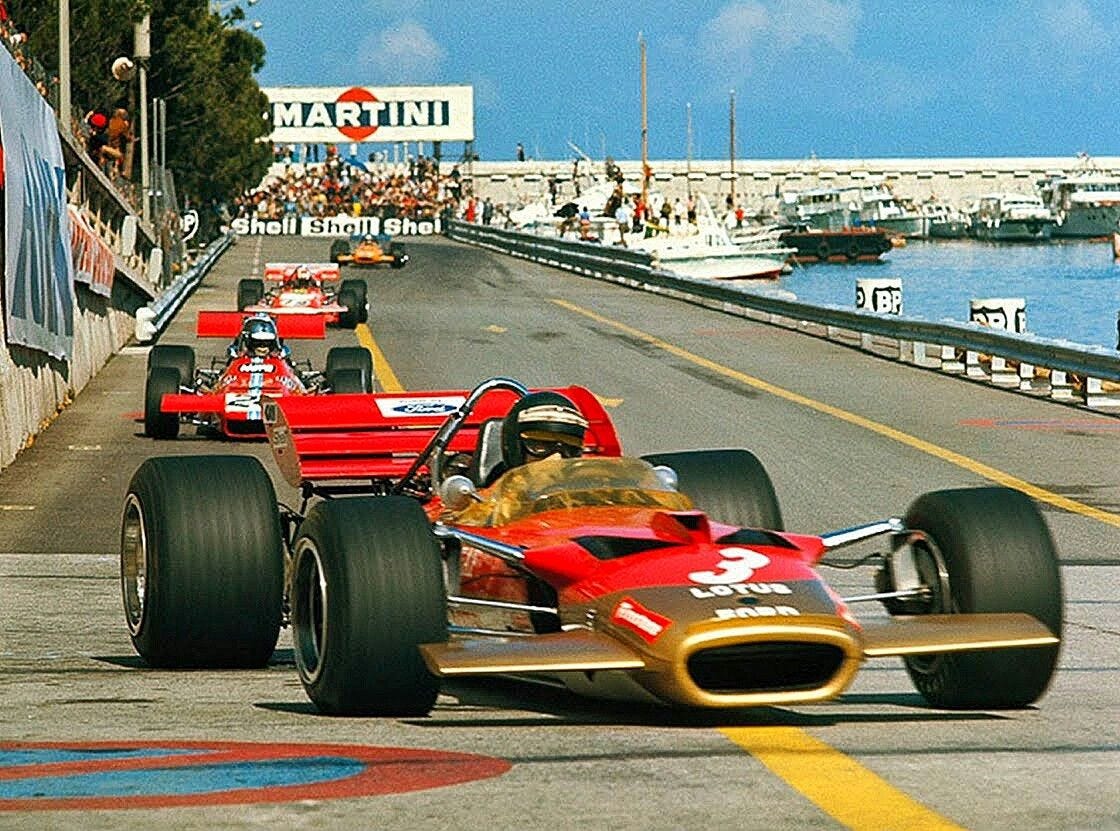


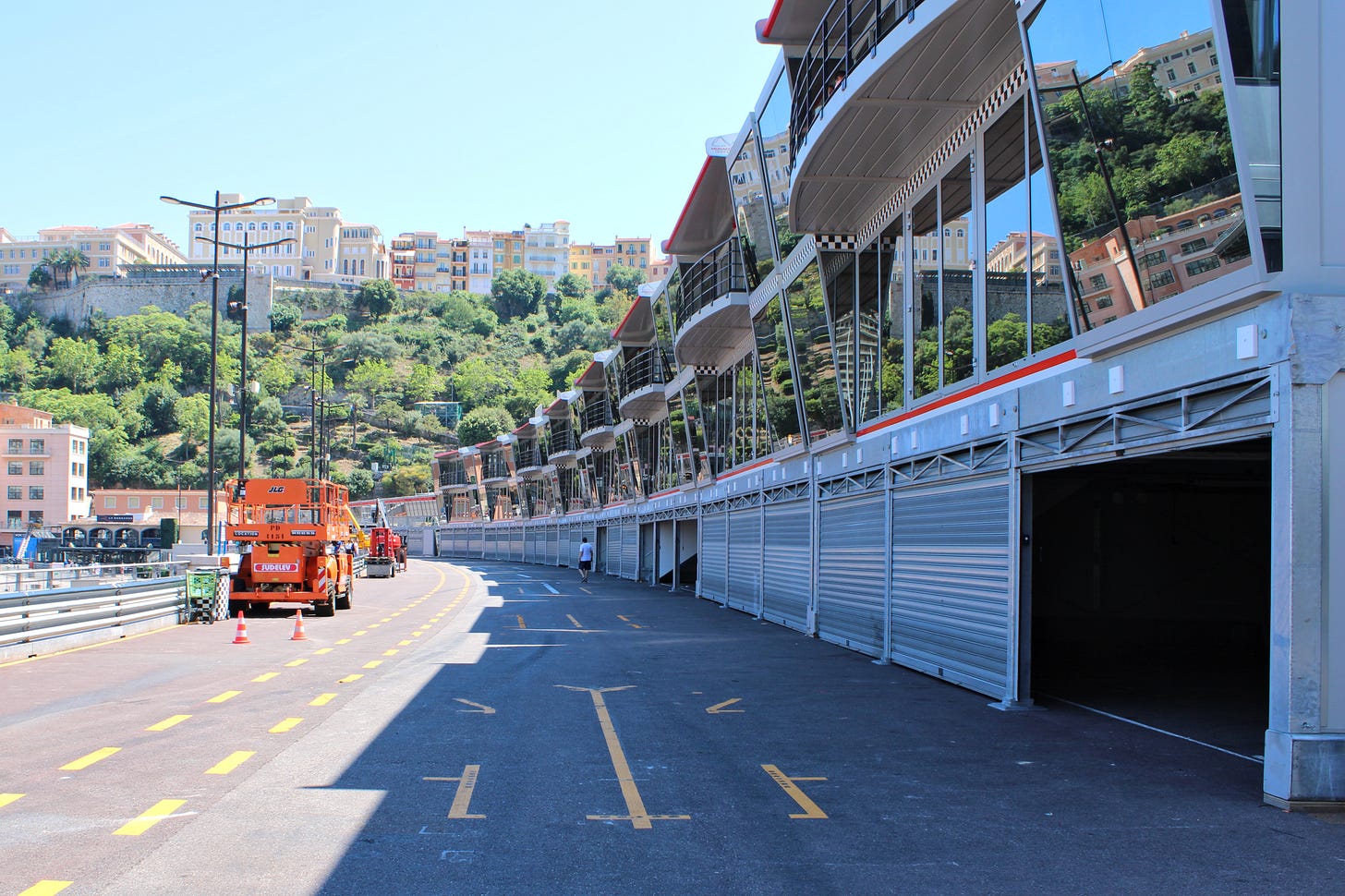

These images are incredible!